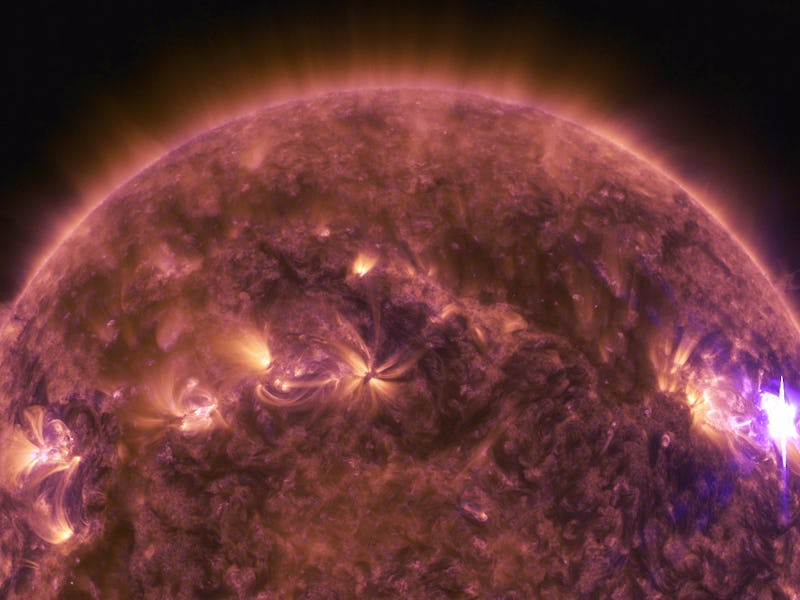President Obama’s time in office is winding down, but he is not sitting idly by — least of all when it comes to space. Hot off the heels of sharing his vision for sending humans to Mars by the 2030s, he took time Thursday to issue an executive order to protect critical infrastructure from a different type of threat: space weather.
The term “space weather” is basically a catch-all term encompassing a myriad of disturbances between the sun and Earth. This includes solar storms, a violent phenomenon which blasts the Earth with streams of charged particles and plasma (called a coronal mass ejection, or CME).
The Earth’s magnetic field deflects most of what the sun dishes out. But it can’t stop everything. Occasionally, charged particles can get through, making their way to the ground. Spreading like a current through a power line, solar storms can wreak havoc on things like the electrical power grid, GPS systems, aviation equipment, and satellites. Basically all the technology that we’ve come to rely on here on Earth.
Solar storms can damage many of the systems here on Earth.
The damage and disruption from a major solar storm could cost more than other natural disasters (like hurricanes). Repairing systems, torn up by a solar storm, could total more than $1 trillion.
Weather forecasting is tricky business. If you thought predicting the path of a storm here on Earth was a challenge, try predicting one hurtling at the Earth from millions of miles away.
When charged particles from the sun interact with Earth's magnetic field, they produce dazzling auroras.
Luckily, we have some systems already in place. In 2015, NASA and NOAA teamed up with SpaceX to launch the Deep Space Climate Observatory DSCOVR satellite. Stationed one million miles from Earth, DSCOVR is essentially a high-tech tsunami buoy in space. From its orbital perch, the satellite can provide us with 15–60 minutes of lead time for incoming severe space weather.
President Obama took that one step further in his executive order. Under the reasoning that space weather disasters could pose a national security risk and put public health in harm’s way, the new order mandates a few ways that the government can work proactively to prevent and mitigate the damage inflicted by solar storms.
These plans include allowing the Secretary of Energy to test devices that can protect and restore energy grids that go offline, continued research by NASA into space weather behavior, making sure the Secretary of Commerce can issue emergency space weather warnings in a timely manner, and giving the Department of Defense some authority to respond and provide support to systems and regions affected by space weather damage.
“Extreme space weather events — those that could significantly degrade critical infrastructure — could disable large portions of the electrical power grid,” the White House wrote, “resulting in cascading failures that would affect key services such as water supply, health care, and transportation.”
In 2012, a massive CME missed the Earth, but slammed into NASA’s STEREO A solar satellite. The data collected during that event showed we dodged a major bullet. Had that blast hit the Earth, it would have overloaded power grids and devastated transformers.
Solar storms don’t happen very often, but have the potential to be quite disruptive, so we need to be prepared. Thanks, Obama.
